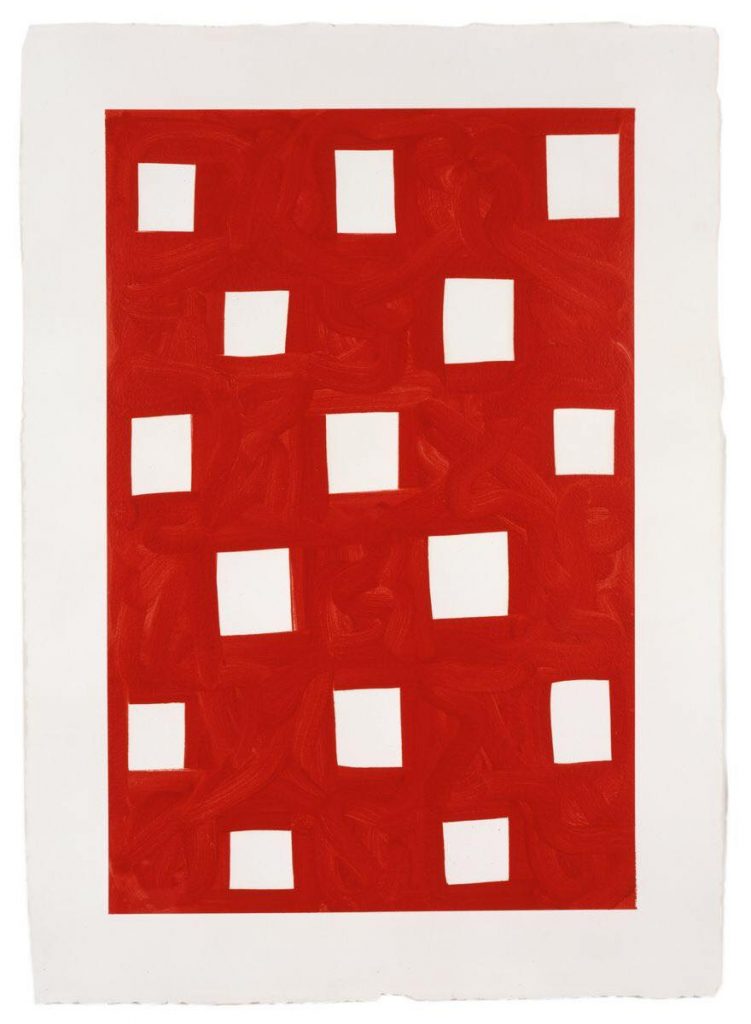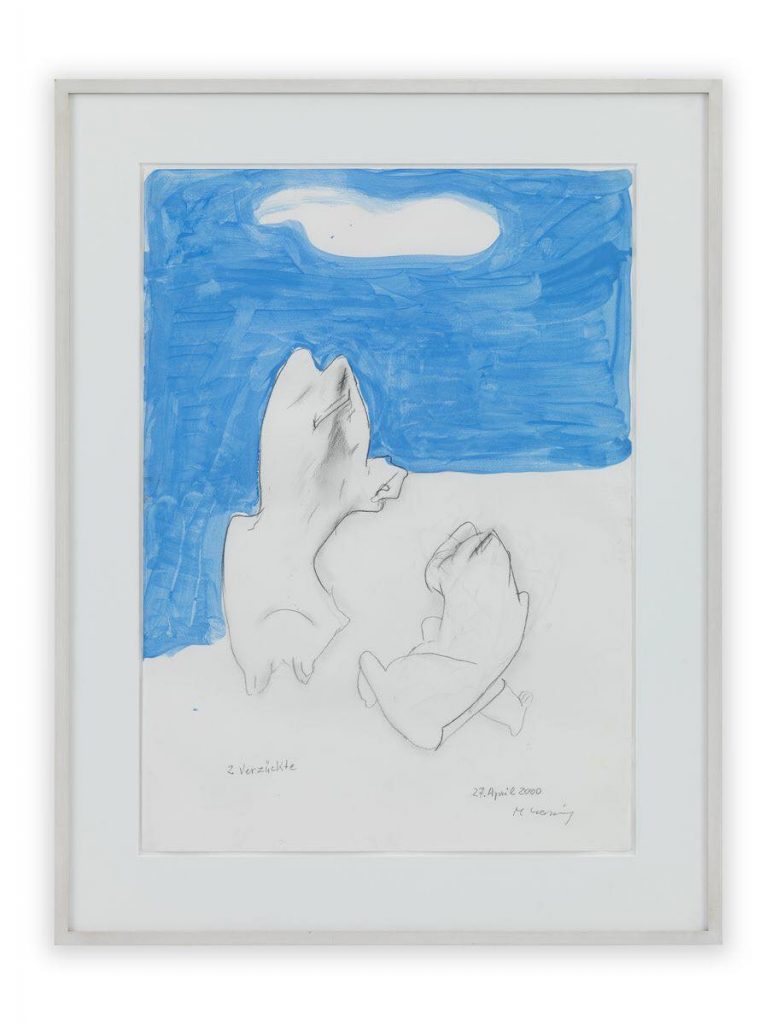7. Juli 2019 – 8. September 2019, Hauser & Wirth, St.Moritz.
Hauser & Wirth is proud to inaugurate the gallery’s first summer season in St. Moritz with an exhibition of modern and contemporary works by important female artists from the gallery’s roster. Entitled ‘Material Actions’, the exhibition takes its title from a series by the artist Anna Maria Maiolino and refers to the gesture innate in the creative process. The presentation aims to explore the complex discourse of painting, questioning its inherently masculine tradition, and the different ways in which artists in the exhibition have engaged with the genre. All works show traces of the hand whether the artist is expressing geometric form, line or their own subjectivity. The perspectives featured traverse continents and decades including work by the key figures: Rita Ackermann, Ida Applebroog, Mary Heilmann, Jenny Holzer, Luchita Hurtado, Maria Lassnig, Lee Lozano and Anna Maria Maiolino.
Of the many dialogues which are evoked by these artists, the relationship between abstract form and colour runs as a thread throughout the first part of the presentation. On the first floor of the gallery, works by Mary Heilmann and Anna Maria Maiolino delve into the possibilities and myriad permutations of abstraction. In the case of Mary Heilmann, the poetry of the works lies in the tension between the rigours of geometry and the contingencies of the human and the organic. The simplicity of these works, such as ‘The Red Screen’ (1995), is played down by a deceptive form of nonchalance and perceptible brushstrokes. Heilmann’s casual painting technique conceals a frequently complex structure that only gradually reveals itself to the viewer.
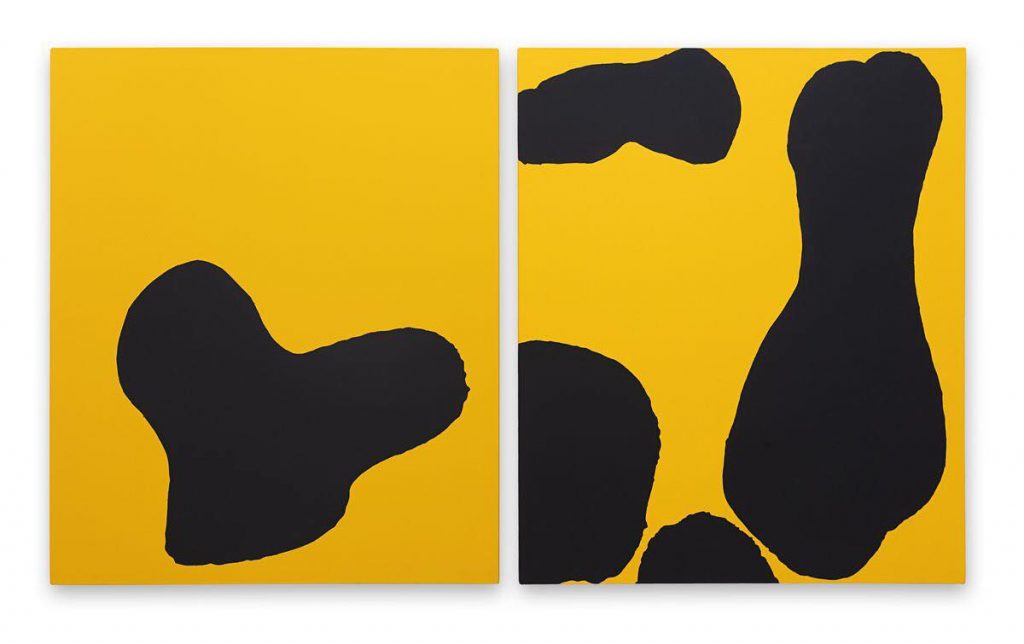
Anna Maria Maiolino, one of the most significant artists working in Brazil today, uses abstraction and fragmentation to explore notions of subjectivity and the self. Her application of paint often bears the imprint of unconscious gestures, daily rituals and sensory expressions of being. In her series Ações Matéricas (Material Actions), Maiolino’s mark-making is based on the repetition of basic actions that are recorded in the material.
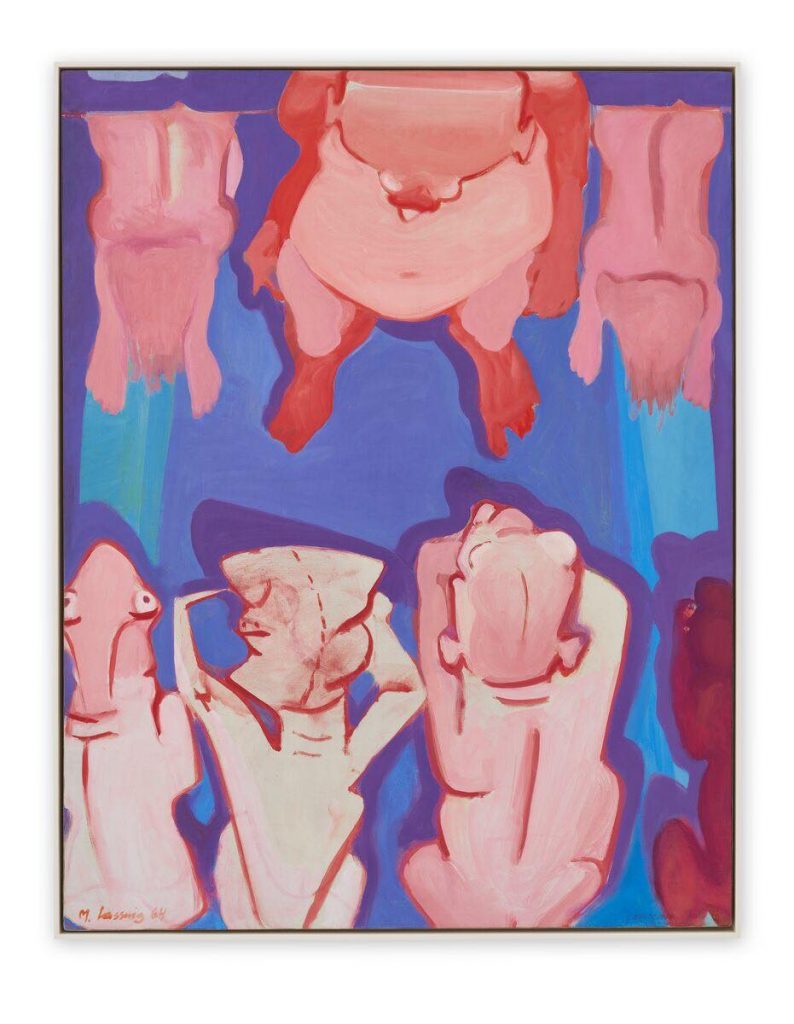
The application of paint or ink to surface retains an intimacy between artist and object bringing to mind the contemplative space of the studio. In this respect, the exhibition, which features works dating over the last half century, encourages an interrogation of the creative act. The relationship between hand, gesture and line is pertinent in the works of Lassnig, and Hurtado, who use the canvas as a tool to forge their own subjective experiences, shifting between figuration and abstraction. Austrian artist Maria Lassnig devoted much of her career to recording her physiological states through a direct and unflinching style. Works featured in the exhibition, such as the important early figurative painting ‘Die Diktatoren (The Dictators)’ (1964), combines abstracted, anthropomorphc figures with vivid hues to capture physical sensations the artist felt from within.
Luchita Hurtado merges abstraction and representation in her painting practice with mystical effect, exploring connections between the body and its larger context – nature, the environment, and the cosmos – in an effort to express universality and transcendence. The oil on paper works in the exhibition depict brightly coloured lines of yellows, greens, oranges and blues (drawing on the tropical fauna of Mexico and her native Venezuela) to create angular compositions that could be seen to morph from landscapes into figures. This artistic vocabulary which has been formed through a coalescence of abstraction, mysticism, corporeality and landscape, speaks to the multicultural and experiential contexts that have shaped the artist’s life and career.
The expressive potential of the painted surface is further considered through the dialogue of Rita Ackermann, Ida Applebroog, Jenny Holzer and Lee Lozano, who are exhibited together on the ground floor of the gallery. Ackermann challenges means of representation through ghost-like compositions which are achieved through sweeping, determined gestures of drawing, painting and erasing, wherein figures rise to the surface only to dissolve again. Applebroog’s work explores themes of violence and power, gender politics, women’s sexuality and domestic space using images stylistically reminiscent of comics, at once beguiling and disturbing. The expressive strokes of Lee Lozano’s paintings are imbued with energy, daring physicality and tirelessness as the artist investigates the body and issues of gender. These artists use the genre of painting as a powerful tool for expression.
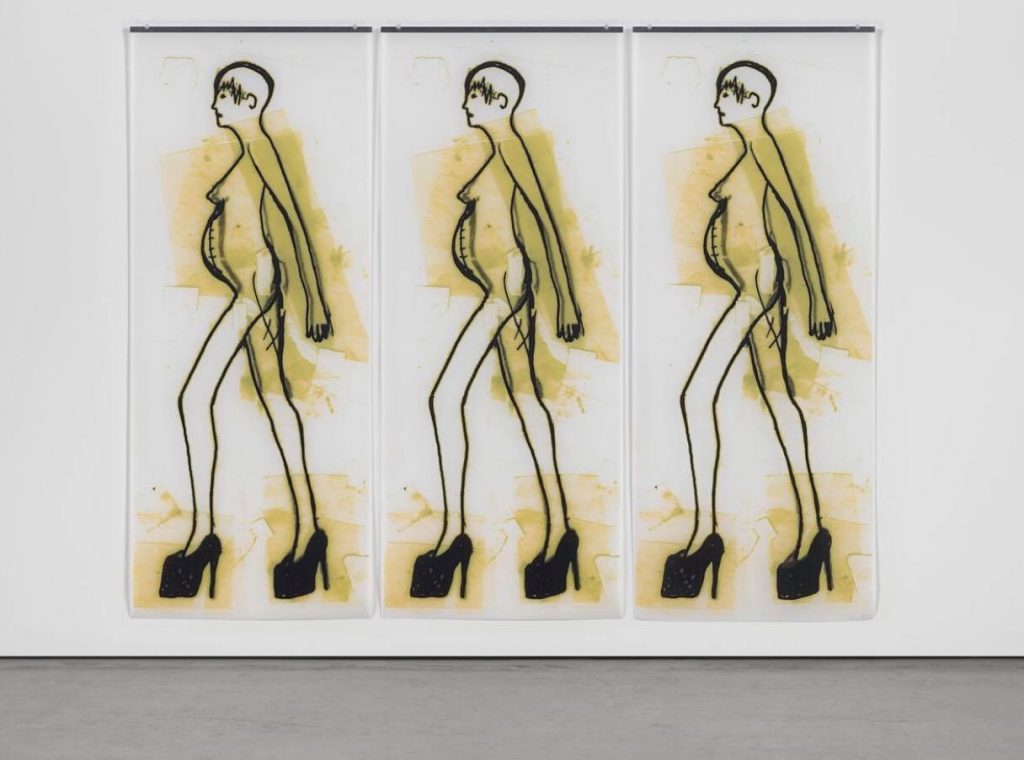
While painting is frequently a deeply personal endeavour, the medium’s potential as a political statement is in evidence through the work of Jenny Holzer. Works by Holzer in the exhibition include a recent series of paintings featuring decommissioned military documents bearing testimony to acts of brutality. Here the artist creates a powerful tension between the realms of feeling and knowledge. Her approach to these works encompass both individual and collective experiences of power, violence, and vulnerability made tangible by veils of watercolour paint which obscure, and effectively censor, sections of the text.
The Opening Reception is on Saturday July 6th at 18.00.


